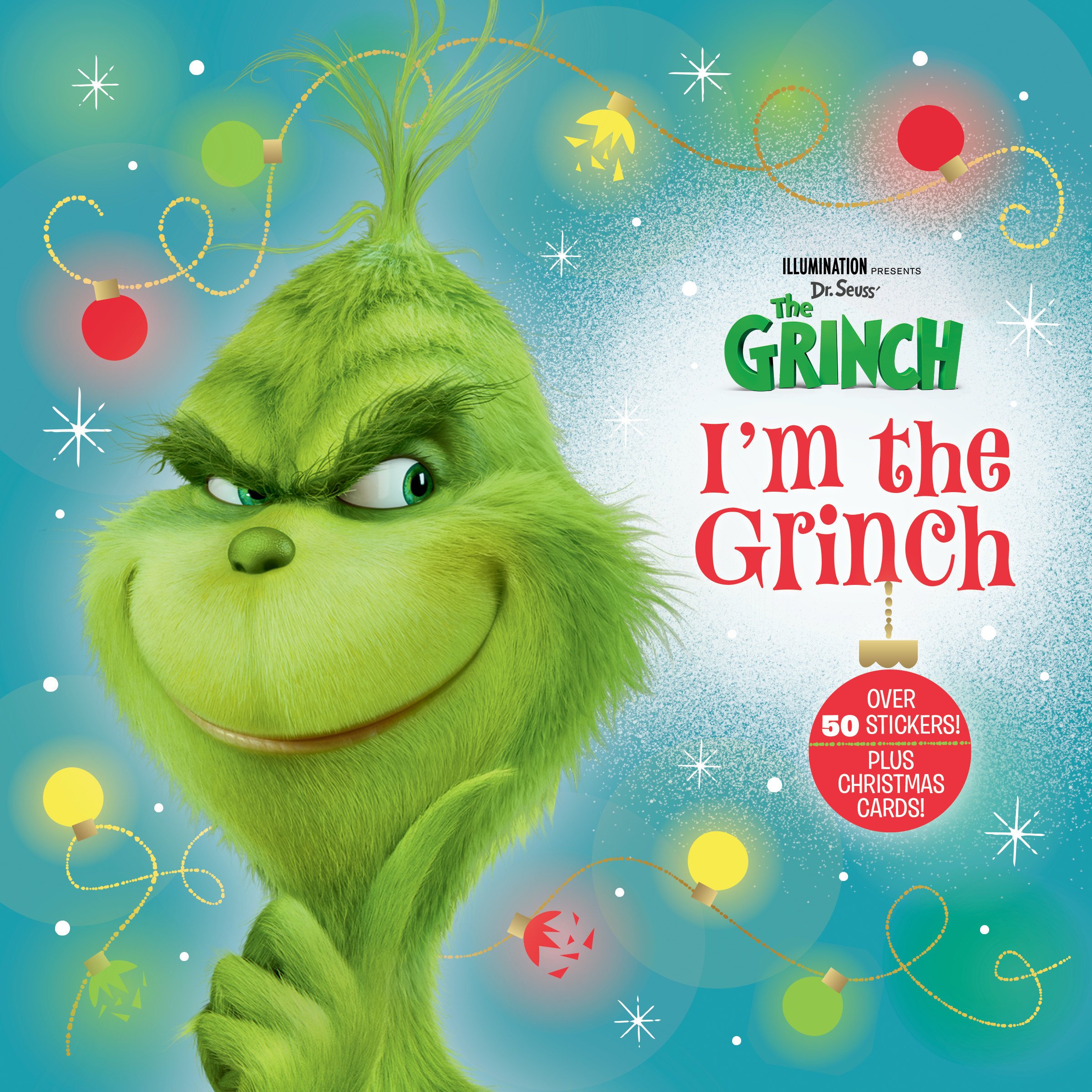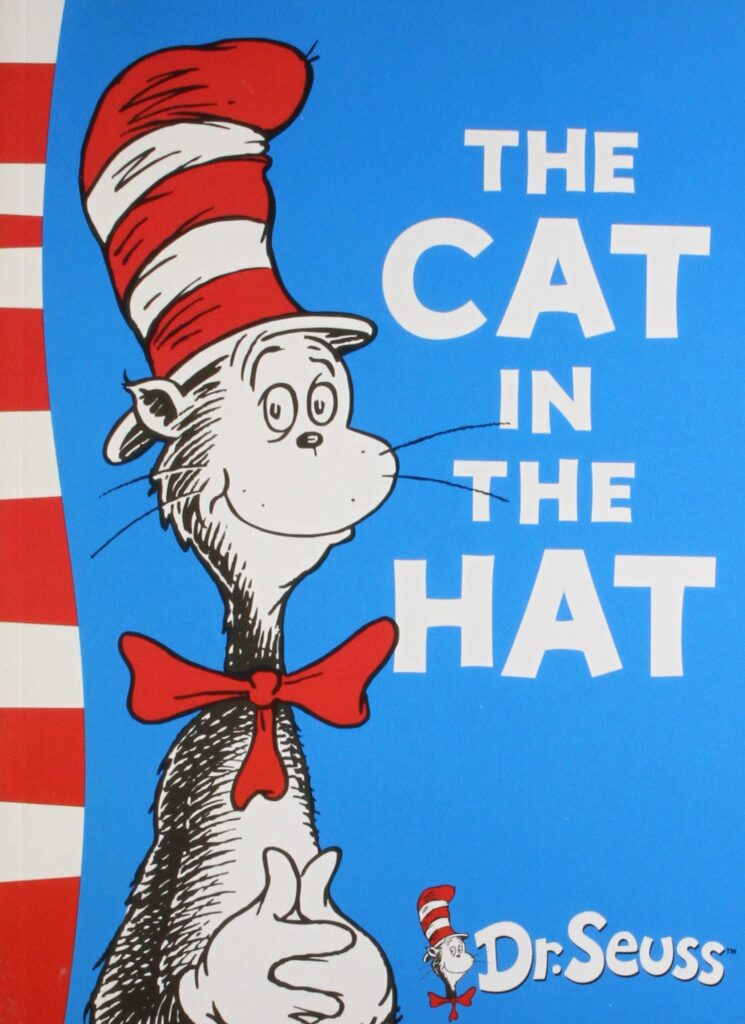

When the First Lady, Michelle Obama in 2010 chose Dr. Seuss book, The Cat in the Hat, to read aloud to the nation’s schoolchildren, she knew that Dr Seuss books with his bouncy rhymes and wild and crazy characters like the Cat in the Hat, Horton, and the Grinch was what children loved the most.
Learning to read was never the same again.
Theodor Seuss Geisel , better known as Dr. Seuss, was born in Springfield, Massachusetts, on March 2, 1904.
My daughter loved and still loves reading Dr, Seuss books. I am guilty myself of being a part of the fan club ! Not surprising as Dr. Seuss books are immencly popular.
The Cat in the Hat became so popular that bookstores couldn’t keep it on the shelves. It just kept selling and never stopped. Within three years, it had sold over one million copies.
Oh, the Places You’ll Go!

“You have brains in your head. You have feet in your shoes. You can steer yourself in any direction you choose. You’re on your own. And you know what you know. You are the guy who’ll decide where to go.”
In 1990, he published Oh, the Places You’ll Go!, summing up his view of life. The illustrations sum up his work, too. If you look carefully, there are details from his earlier books everywhere. Dr. Seuss speaks to his readers directly throughout the whole story, describing all the challenges and adventures facing a young person starting out on the road of life. He ends cheerfully, but he doesn’t make any promises:
“And will you succeed? Yes, you will indeed! (98 and ¾ percent guaranteed.)
He was almost eighty~ six years old when he wrote this book.

The Lorax

On a safari trip in Kenya, Ted saw a herd of wild elephants ambling by. Suddenly he knew exactly what he wanted to say. He grabbed some scrap paper and wrote almost the whole story in one sitting.
The Lorax tells the story of a beautiful land where truffula trees grow. The Once-ler wants to chop them all down to use in his factories. It is the Lorax who “speaks for the trees.” It was Ted’s favorite of all his books, but it didn’t sell very well at first. People thought it preached too much.
A few years later, when saving the environment was on everyone’s mind, the book found its audience.
In 1989, The Lorax became the first Dr. Seuss book to encounter censorship. The logging industry wanted it off school reading lists. But Ted argued that he wasn’t against logging or industry. “I live in a house made of wood and write books printed on paper,” he pointed out. He was just against the greed that made people go too far and ignore the damage they caused.

The Butter Battle Book

In 1984, The Butter Battle Book came out.
It, too, made some people angry. It tells the story of the Yooks and the Zooks, enemies who keep building bigger and more complicated weapons to fight against each other. Finally they each have a weapon that could destroy everyone. They stand facing each other, wondering what will happen next.
Ted didn’t feel he could write a comforting happy ending. After all, in the real world, the United States and the USSR were both trying to build bigger, better weapons.
So in The Butter Battle Book, Ted left it up to his readers to think about how the story should end.
Some people wanted this book taken off of library shelves.
It was the first children’s book ever to spend six months on the adult best seller list of the New York Times Book Review.

The Cat in the Hat

A friend of Ted’s who worked for the publisher Houghton Mifflin asked Ted~ “Write me a story that first-graders can’t put down!”
Ted was willing to try. Houghton Mifflin would sell the book to schools and libraries, and Random House would sell it to bookstores.
William Spaulding gave Ted a list of about three hundred words that most first-graders should know. The book could only use about 225 words and all of them had to come from this list.
Ted thought it would be easy to toss off a little story—but he soon found out it was almost impossible. Every time he had an idea, he needed a word that wasn’t on the list. He spent more than a year trying and failing.
Finally he decided, “I’ll read [the list] once more and if I can find two words that rhyme, that will be my book.” He found them—cat and hat—and The Cat in the Hat was born.
In 1957 The Cat in the Hat turned Ted into a superstar author. He had become the head of his own publishing house.
As if that wasn’t enough for one year, he also invented the Grinch.
As soon as it was published, How the Grinch Stole Christmas! was a big hit.


Over the next ten years, Ted wrote twelve books, including classics like The Cat in the Hat Comes Back, One Fish Two Fish Red Fish Blue Fish, and Hop on Pop!
All of Ted’s stories were a lot of fun, but they also brought up serious ideas.
Yertle the Turtle and Other Stories is about a tyrant who pushes everyone around and an ordinary little turtle who is brave enough to stand up to him. Ted based Yertle on Hitler, and he worried that people might object to this. But actually, the only problem came when the little turtle burps.
“Nobody had ever burped before on the pages of a children’s book.”
Another book that meant a lot to him was The Sneetches and Other Stories. During the early 1960s, black people were struggling to win their civil rights. In his book, Ted described all the trouble between the star-bellied Sneetches and the Sneetches without stars. The story shows how silly Ted thought it was for people to hate one another because they looked different.
It was hard work writing all those books. Ted spent eight hours a day at his desk, seven days a week.
In the spring of 1984 an Associated Press reporter phoned to say that Ted had won a Pulitzer Prize—a special citation for his contribution over nearly half a century to the education and enjoyment of America’s children and their parents.
One judge said the proposal to award a Pulitzer to Dr. Seuss, initiated by San Diego newspaper editors, had met with “as close to immediate unanimity” as any he recalled.
Even after Ted Geisel’s death, Dr. Seuss lived on. During the course of his career, he wrote some forty books. In 2001, when Publishers Weekly drew up a list of the top 150 best-selling children’s books of all time, twenty-four were by Dr. Seuss.
Disclaimer: All recommendations are impartial and based on user experience, with no bias to the products or the brand. The products in this post may contain affiliate links
[…] “Oh, The Places You’ll Go!” and all the Books by Dr. Seuss […]